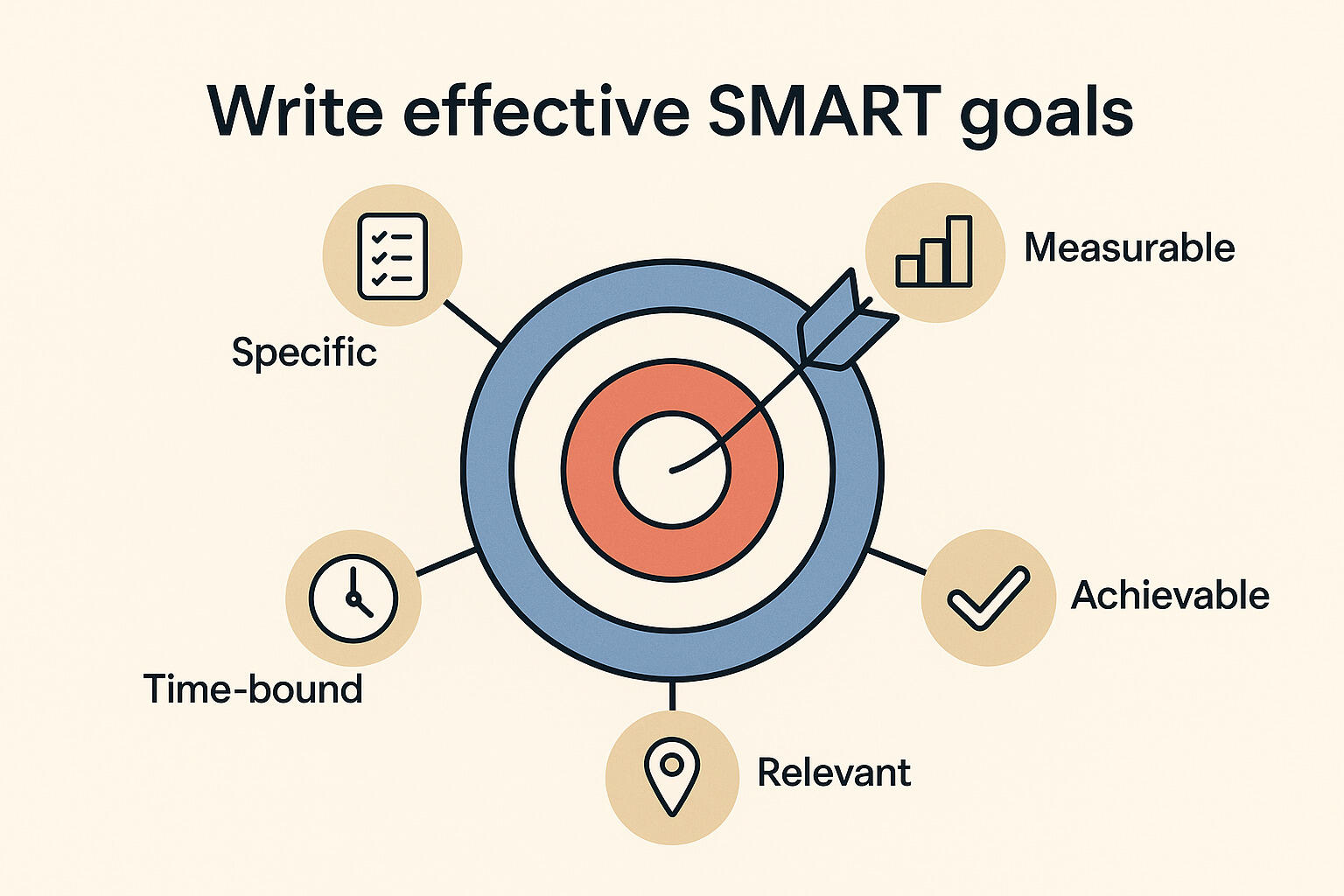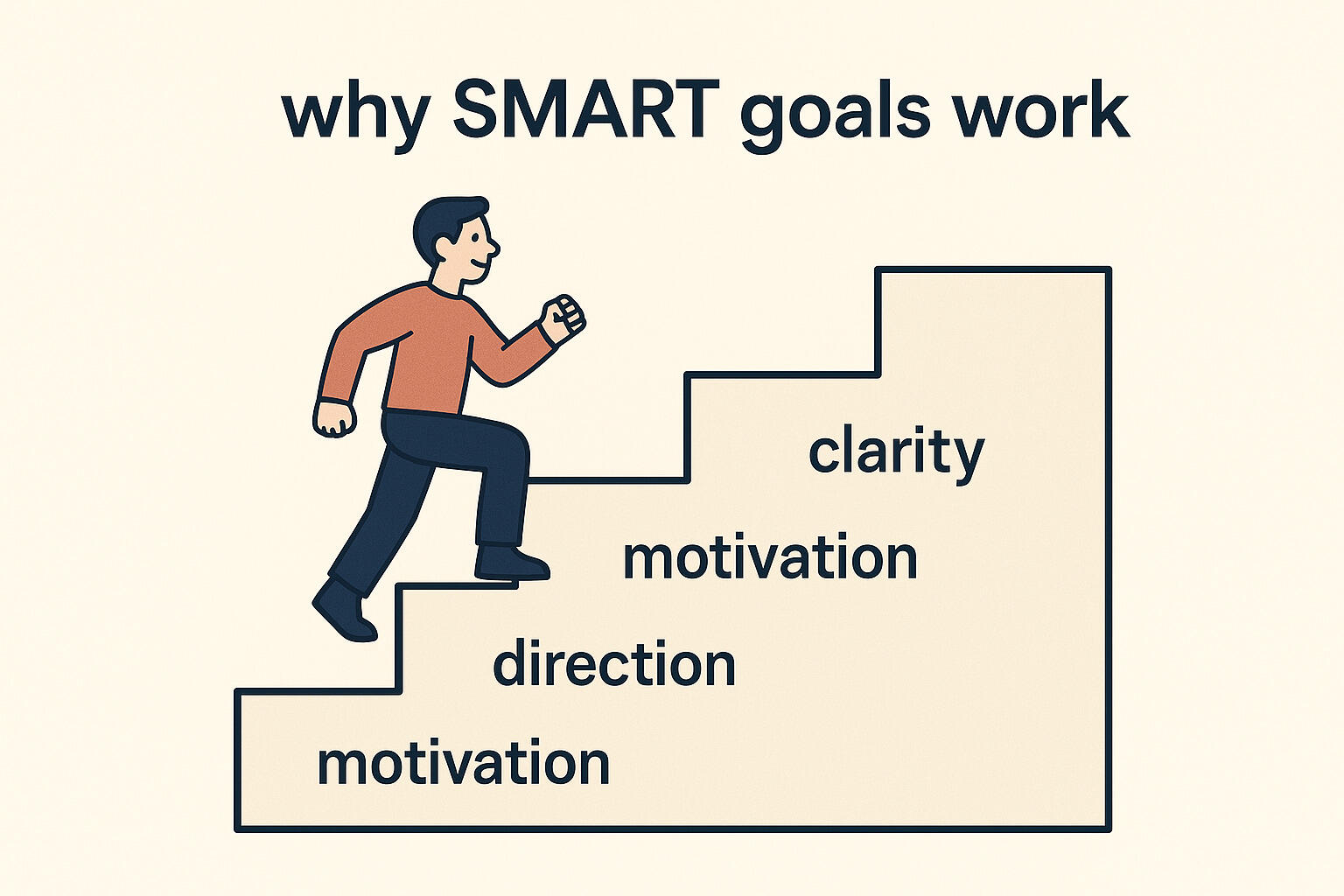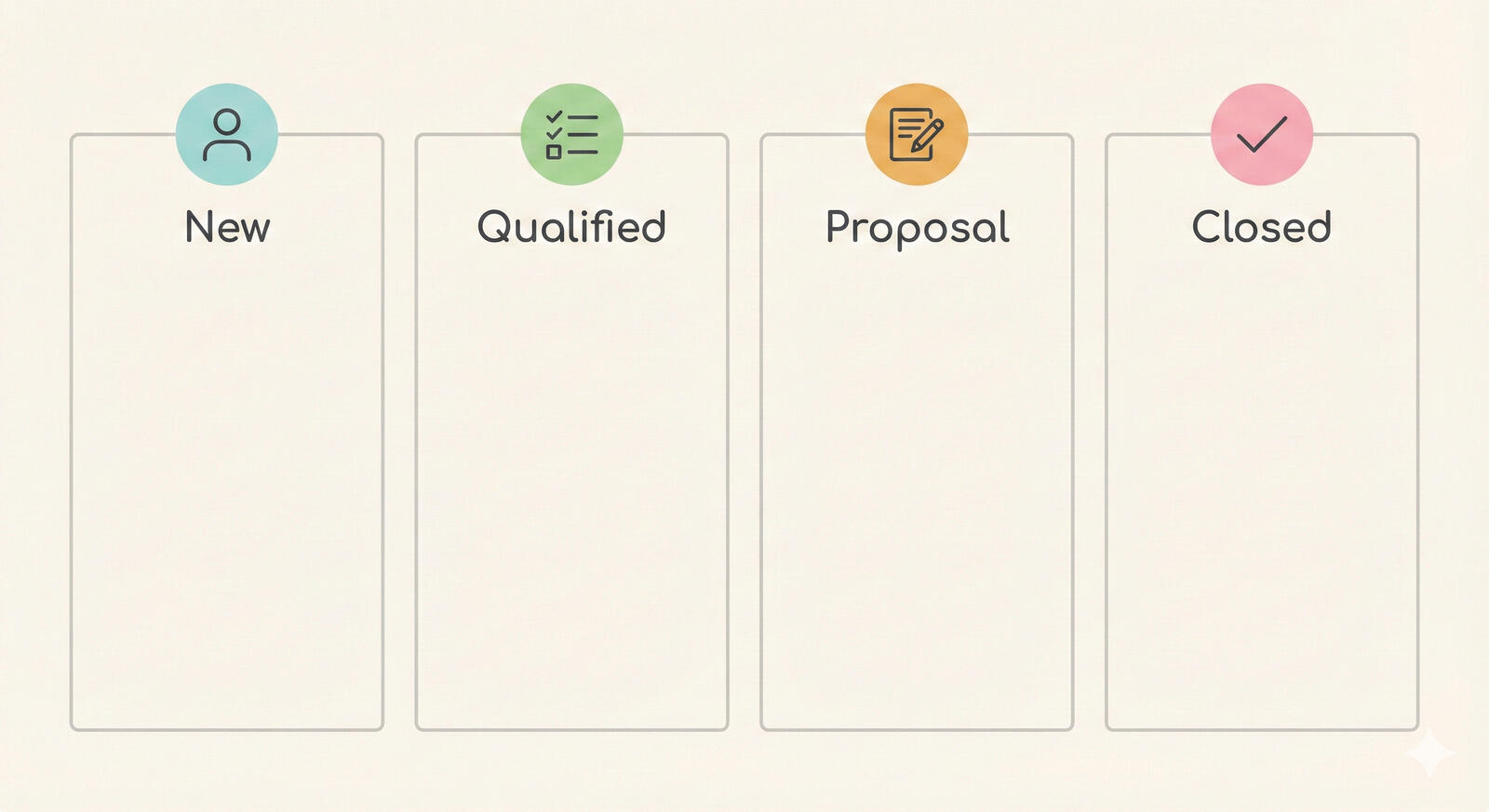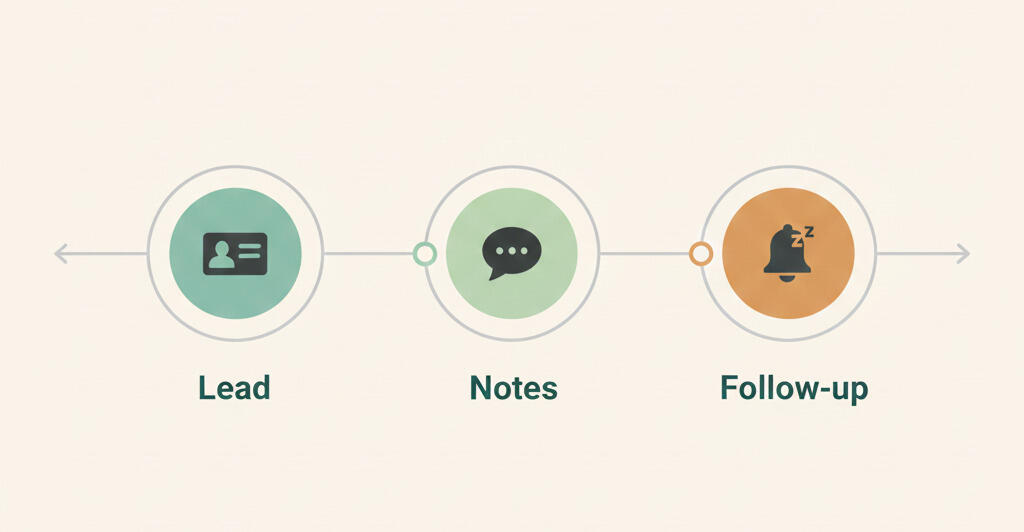How to write effective SMART goals
Contents
Clear goals help teams avoid wasting time, repeating discussions, or skipping steps. When everyone understands exactly what they need to do, it's easier to make decisions and track progress. SMART goals help with this. They change general ideas into clear results with defined steps and deadlines.
The SMART framework keeps teams organized without adding complicated steps or extra effort. Using a project management tool Breeze it gets easier to assign tasks, set due dates, and track progress from one place. When your team has a clear and shared plan, everyone can easily stay on track and avoid confusion.

1. What Are SMART Goals?
SMART is a simple way to set goals, turning unclear ideas into tasks that are easy to understand and do. The letters stand for Specific, Measurable, Achievable, Relevant, and Time-bound. Each word helps you clearly say what you want to achieve, track your progress, and finish your work.
SMART goals help prevent scope creep by being clear and having deadlines. Scope creep happens when your goals aren't specific or when tasks keep changing. A clearly defined goal helps the team stay focused, so everyone knows exactly what to do and when it needs to be done.

Specific
Objectives shouldn't be easily confused with each other, or baffle you about what you really want, so you'll need to be specific. When a goal is specific rather than broad, it removes any uncertainty while you or your team work through it. How can you get to the heart of what you want to achieve and set a targeted goal? By answering questions like:
- What do I/we want to accomplish?
- What steps do I/we need to take to get there?
- Who is responsible for completing each step of the goal?
A clear project scope makes goal-setting easier by focusing the team and removing confusion about what needs to be done.
Measurable
Tying in closely with how specific it is, you need to be able to measure your goals too. Quantify your aims with objective markers — like a number, deadline date, or percentage change. It will then be clearer when you've completed it — and you can make sure the progress you make along the way isn't lost in the weeds. Ask yourself:
- How should you objectively measure what you want to achieve?
- How will you track your progress toward completing the goal?
- Could someone else pick up your goal and understand what they'd need to see to know it was successful?
Achievable
If you set a goal that's too easy, you won't feel the same satisfaction achieving it. On the flipside, an objective that's too difficult can feel pointless to you or your team. Ultimately, you're far more likely to accomplish your goals if you can find the middle ground between challenging and impossible. See if you can answer these questions about your goal:
- Can you/your team reasonably complete your objective?
- Is it a "stretch goal" — one that's purposefully challenging but still achievable?
- Is there any reason someone would be demotivated by this goal?
Relevant
If you want to focus on this goal above other targets, it should completely align with the wider direction you want to head in. When an objective is relevant, you're more likely to stay interested and feel inspired to complete it. Here are some questions to consider:
- Why are you setting this objective?
- How does this goal fit in with your wider aspirations?
- What would it mean to you to meet this goal?
Time-bound
No one likes an objective that drags on, never getting fully finished. Goals that don't have an end date can be susceptible to scope creep and unclear success metrics, too. So, when defining your objective, it's important to accompany it with a time limit. And if there are sub-tasks within the SMART goal, each one will need its own deadline within a clearly defined timeline. When setting your time limit, think:
- Are there any urgent factors that will determine when this goal needs to be met?
- Is this a realistic deadline for this goal to be completed?
- Do I need to factor in any times when I won't be able to work on the goal?
Setting a realistic project timeline helps teams stay on track with their goals and avoid delays during the work.
2. Advantages of SMART goals

They provide direction
When you and your team know exactly what you're working toward, you can see how your work contributes to the overall goal. This is a great motivator to keep people on track. Formulating SMART goals will help the team communicate well and strive toward the end result.
They take you out of your comfort zone
Sitting down and setting out a SMART goal can really force you to look at the possibilities. They can push you to achieve more than you thought you could before. And once you've put the time into drafting a SMART goal, it can be harder to let it fall to the wayside.
They provide clarity on your success
It's common to get to the end of a project and be unsure if you achieved exactly what you set out to in the beginning. A SMART objective should more clearly define goals with metrics, specific aims, and time frames, so you'll be able to measure your successes more easily too.
They make it simpler to evaluate the project
Even if you don't manage to complete a goal, you can still look back on it afterward. What went well, and what didn't? How would you change your approach to a goal like this in the future? SMART goals make it easier to measure your finished project's success because the initial aims are clearer to see.
3. When SMART goals fall short

SMART goals bring structure and clarity, but they aren't perfect. In some environments, they can lead to problems that reduce performance instead of supporting it:
- Narrow focus: Overemphasis on specific outcomes can cause teams to miss broader opportunities. This can limit learning and reduce innovation.
- Reduced flexibility: Because SMART goals are tied to specific metrics and timelines, adjusting them during a project can be difficult.
- Pressure and demotivation: When success is defined in binary terms (met or not), progress that doesn't reach the goal may feel like failure, even if it adds value.
- Misaligned incentives: Goals tied too closely to performance measures can lead teams to ignore unintended consequences or push for outcomes that don't support long-term goals.
- Overlooking the bigger picture: SMART goals prioritize what can be measured, which may leave out important but less tangible areas like team dynamics, engagement, or morale.
To avoid these issues, it helps to combine SMART goals with regular check-ins or other planning tools that support reflection and flexibility. This creates space for learning, course correction, and better alignment with overall priorities.
4. How to turn vague goals into SMART goals
Many goals start as loose ideas: "increase sales," "hire new people," or "work on the project." These sound reasonable but leave too much room for confusion or delay SMART goals fix that by adding structure and clarity.
Here are a few common goals, rewritten using the SMART framework. Each version becomes specific, measurable, achievable, relevant, and time-bound, making it easier to act on and easier to track.
"I'm going to get a job in project management"
It's great to aspire to a new job, but this is not specific enough — it doesn't tell you the first action you'll take to bag that role in project management. A better example would be:
"I'm going to check for new entry-level project manager jobs on [specified job boards] every morning at 7:30 am, and apply for any I'm interested in".
"I'm going to study for my accounting exam next Tuesday"
While studying for your exam is probably going to help you pass, this goal isn't measurable. It won't set you up with any kind of studying schedule — so you may end up not putting in enough hours of revision. A better goal would be:
"I'm going to study for five hours every day, then two days before the exam I'll revise everything I've learned".
"I want to increase my sales by 500% next month"
As much as you may long to see this kind of business success, most people don't manage so much, so quickly. Setting a goal that isn't achievable could make you feel demotivated before you've even started the sales month. A more realistic goal might be:
"I'm going to aim to increase my sales by 50% accumulatively each month".
"I'm going to contact as many sales pipeline prospects as possible until I win 10 new marketing contracts"
Working through a sales pipeline is no small feat. But if you know your boss only wants you to target IT clients at the moment, it's not relevant to contact everyone in your company's pipeline. A better example is simply:
"I'm going to contact the IT client prospects in the sales pipeline, with the aim to win up to 10 new marketing contracts".
"I will expand the design team by employing two new illustrators"
With the demands of everyday work, it may be difficult finding the time to employ the new staff members your team needs — especially as this goal isn't time-bound. By setting deadlines for each stage of the employment process instead, it won't always be the lowest priority. These deadlines could start with:
"I'm going to send a full job spec for two illustrator positions to [employment agency] by this Monday".
SMART goals give each task a clear owner, a target, and a deadline. When work is framed this way, teams move faster and spend less time second-guessing what to do next.
5. How to manage SMART goals
After you set SMART goals, the next step is to make sure the team follows through. This means assigning tasks, setting priorities, and checking progress often. Even clear goals can be forgotten or delayed if there's no structure.

Breeze helps by turning goals into tasks on project boards. Each task is easy to see, assigned to someone, and has a deadline. As work moves forward, teammates can leave comments and update the status. Everything stays in one place, so there's less need for back-and-forth messages.
If plans change, it's simple to adjust. You can move tasks to another list, switch who's responsible, or change due dates without losing the big picture. This helps the team know what's done, what's stuck, and what's coming up.
Managing SMART goals means staying on track but also being ready to shift when needed. Breeze makes this easier by keeping the plan clear, flexible, and easy to manage.
6. Takeaway
Clear goals help teams make better decisions, take responsibility, and get work done more smoothly. SMART goals add structure that keeps teams focused without making things too rigid. They break big goals into smaller steps that are easier to manage, track, and finish. To keep that clarity from start to finish, it helps to use a tool built to manage project work.
Breeze gives your team one place to plan tasks, follow progress, and adjust when things change. You can easily update deadlines, shift priorities, or reassign tasks without losing track. If you're looking for a simple way to manage project work and stick to your goals, Breeze keeps everything clear and organized.








